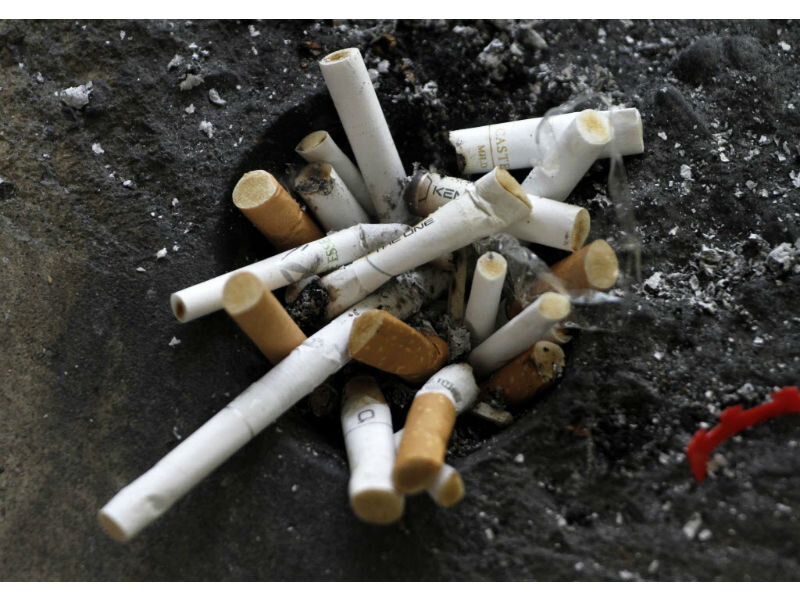Smoking reports from surgeon general: What will it take to fully snuff it out?
Loading...
The past 50 years have brought a major shift in public perception of tobacco.
Since the US surgeon general’s 1964 report declared smoking to be harmful, there have been mandatory warning labels on cigarette packs, massive public education campaigns, increases in excise taxes, restrictions on sales, and legislation prohibiting smoking in certain public places.
Those tobacco control efforts have saved as many as 8 million lives, studies have shown. Yet smoking is still identified as the leading preventable cause of death in the United States.
“To go to the next level, we have to put an emphasis on this idea of creating a smoke-free generation,” Acting Surgeon General Boris Lushniak told the Monitor earlier this month.
On Friday, Dr. Lushniak presented the 50th anniversary report on smoking and health in a commemorative event at the White House.
“Since the first surgeon general report [on smoking and health] in 1964, over 20 million preventable deaths can be attributed to cigarette smoking,” Lushniak told reporters. “Today the annual death toll from smoking is approaching 500,000 per year. Enough is enough.”
Lushniak went on to express hope that the 100th surgeon general’s report “will be marked by grainy pictures from the past.”
Realizing that goal will probably take a multi-pronged approach to prevention, including public education, scientific research, and public policy.
While total prohibition of tobacco products is unlikely, public policy experts see stricter legislation playing a much larger role in future efforts.
“We have learned public policy is the most effective way to help people make healthy lifestyle choices and to create an environment that supports them in those choices and raises the health of the population as a whole,” says attorney Doug Blanke, director of the Public Health Law Center at William Mitchell College in St. Paul, Minn.
Mr. Blanke expects that future policy will include additional state and municipal bans on smoking in public places, as well as increased state and federal taxes on tobacco products.
Restricting smoking in public not only protects nonsmokers from exposure to secondhand smoke, but also forces smokers to smoke less. Current research suggests that the less people smoke, the easier it will be for them to quit later.
Currently, 24 states have laws banning smoking in workplaces, bars, and restaurants, according to the American Nonsmokers’ Rights Foundation in Berkeley, Calif. The majority of states that do not restrict smoking are concentrated in the Southeast, in places where tobacco farming is a major component of the economy.
Many other states have partial bans that prohibit smoking in specific workplaces or require ventilation systems, but Blanke hopes to see full bans instituted in all 50 states in the years to come.
“America needs to go smoke-free,” he says. “Half of Americans live in communities in which we do not have smoke-free public policies.... We have to get those states that are not smoke-free to go smoke-free.”
Some communities – including New York City and Boston – have taken restrictions one step further and now prohibit smoking in public parks. A handful of states also prohibit smoking in cars while children are present.
Increasing taxes will probably continue to be a major strategy used by the federal and state governments to deter young people from taking up the habit and to encourage established smokers to try to quit.
“We know that increasing the cost of smoking is one of the most powerful interventions we can make to prevent smoking and reduce prevalence,” Secretary of Health and Human Services Kathleen Sebelius writes in a preface to the surgeon general’s most recent report.
The Obama administration imposed a $1.01-per-pack excise tax on cigarettes in 2009 and has proposed an additional $0.94 tax in the 2014 budget. Many state and local municipalities have added their own excise taxes.
Both the surgeon general and the Centers for Disease Control and Prevention urge states to use some of the revenue collected from such taxes to boost state prevention and cessation programs.
Currently, states spend an average of $1.50 per person each year on such programs. The CDC would like to see that investment rise to $12 per person per year.






